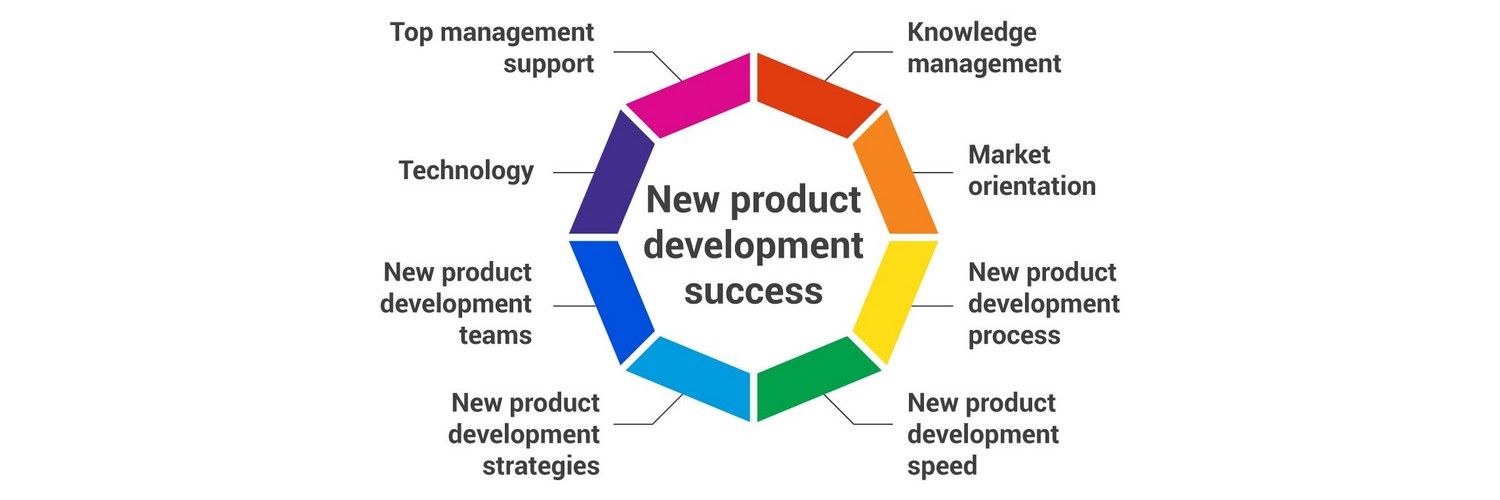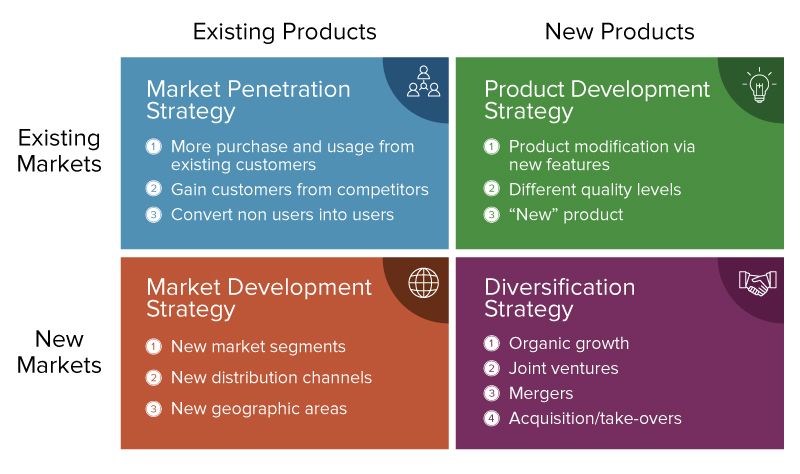Unveiling the Power of Marketing Strategy in New Product Development
New product development is a dynamic and competitive process that requires careful planning and execution. To navigate this landscape successfully, businesses must harness the power of a well-crafted marketing strategy.
In this article, we will explore the significance of marketing strategy in new product development and unveil the key insights and practices that drive success. Whether you are a startup or an established company, understanding how to effectively integrate marketing strategy into your product development process is essential for gaining a competitive edge and achieving sustainable growth. Join us as we delve into the power of marketing strategy in new product development, exploring its pivotal role in shaping the trajectory of a product’s success.
The Concept of Marketing Strategy in The Context of New Product Development.
Marketing strategy in the context of new product development refers to the comprehensive plan and approach taken by a company to promote and sell a new product. It involves identifying the target market, understanding customer needs and preferences, positioning the product effectively, and determining the most suitable marketing channels and tactics to reach and engage the target audience.
A well-crafted marketing strategy for new product development is crucial because it helps ensure the success of the product in the market. It allows companies to generate awareness, create demand, and drive sales for the new product. By incorporating marketing early in the product development process, companies can gather insights about their target audience, competition, and market trends, which can inform product design decisions and help create a unique value proposition.
Marketing strategy in new product development encompasses various stages, including idea screening, aligning the product concept with business objectives, analyzing the target market, creating prototypes, conducting concept tests, launching the product, and commercializing it. The timing of marketing activities within these stages may vary depending on the company’s overall business strategy and the nature of the product itself.
Ultimately, a successful marketing strategy for new product development aims to differentiate the product from competitors, generate leads, improve conversions, and maximize return on investment. It involves crafting compelling brand messages, selecting the right marketing channels, and continuously evaluating and adjusting the strategy based on market feedback and performance metrics.
Significance of an Effective Marketing Strategy in The Success of New Products.

An effective marketing strategy plays a crucial role in the success of new products. Here are some key reasons why a strong marketing strategy is significant:
- Generating Awareness: Marketing creates awareness about new products among potential customers. It informs them about the existence, features, and benefits of the product. Without effective marketing, even the most innovative and valuable products may go unnoticed or fail to reach their target audience.
- Targeting the Right Audience: A well-defined marketing strategy helps identify and target the specific audience who are most likely to be interested in and benefit from the new product. By understanding the needs, preferences, and behaviors of the target market, marketing efforts can be tailored to effectively reach and engage with potential customers.
- Differentiating from Competitors: In a competitive market, a strong marketing strategy helps differentiate the new product from similar offerings by competitors. It highlights the unique value proposition and positioning of the product, emphasizing why customers should choose it over alternatives. Effective marketing can create a competitive advantage and make the product stand out in the market.
- Driving Customer Adoption: Marketing strategies are instrumental in driving customer adoption and encouraging initial purchases of the new product. By showcasing the product’s benefits, demonstrating its value, and addressing potential customer concerns or objections, marketing can influence customer decision-making and motivate them to try the product.
- Building Brand Image and Trust: Marketing not only promotes the new product but also contributes to building the overall brand image and trustworthiness. Consistent and effective messaging, branding, and communication help establish credibility, strengthen brand reputation, and create a positive perception of the product and the company behind it. This, in turn, can lead to increased customer loyalty and repeat purchases.
- Facilitating Feedback and Iteration: Marketing channels provide an avenue for customers to provide feedback, reviews, and insights about the new product. This feedback loop enables the company to gather valuable information, identify areas for improvement, and iterate on the product to better meet customer needs and preferences. Marketing plays a crucial role in facilitating this communication and gathering customer insights.
Overall, an effective marketing strategy ensures that the new product reaches the right audience, creates awareness and interest, differentiates from competitors, drives adoption, and builds a strong brand image. It is a key driver in the success of new products by enabling companies to maximize their market potential and generate revenue.
Key Components of Marketing Strategy Development
The core components of a marketing strategy for new product development include market research and analysis, identifying target markets and customer segments, defining a value proposition, and considering pricing, distribution, promotion, and branding. Let’s explore each of these elements in detail:
1. Market Research and Analysis:
Market research plays a crucial role in understanding the market landscape, customer needs, and competitive dynamics. It involves gathering and analyzing data related to customer preferences, market trends, industry insights, and competitor activities. Market analysis helps identify opportunities, assess market potential, and make informed decisions throughout the new product development process.
2. Identifying Target Markets and Customer Segments:
Identifying the target market is essential for effective marketing. This involves segmenting the market based on various factors such as demographics, psychographics, behavior, and preferences. By understanding the distinct needs and characteristics of different customer segments, companies can tailor their marketing efforts to reach the right audience with the right message
3. Value Proposition:
The value proposition defines the unique value or benefits that a new product offers to customers. It answers the question, “Why should customers choose this product over competitors?” A strong value proposition highlights the product’s key features, advantages, and the problem it solves for customers. It serves as a foundation for marketing messaging and positioning.
4. Pricing, Distribution, Promotion, and Branding Considerations:
- Pricing Strategy: Determining the appropriate pricing strategy involves considering factors such as production costs, competitive pricing, perceived value, and pricing elasticity. Price positioning can influence customer perception and market positioning.
- Distribution Strategy: This involves deciding how the product will reach customers. It includes considerations such as distribution channels (e.g., direct sales, retailers, online platforms), logistics, inventory management, and partnerships.
- Promotion Strategy: Promotion encompasses the various marketing activities aimed at creating awareness, generating interest, and driving sales. It includes advertising, public relations, sales promotions, digital marketing, content marketing, and social media engagement.
- Branding Strategy: Branding involves creating a unique identity and perception for the product in the minds of consumers. It includes elements such as brand name, logo, messaging, visual design, and brand positioning. Effective branding helps differentiate the product from competitors and build customer loyalty.
By integrating these components into a comprehensive marketing strategy, companies can effectively introduce and promote their new products in the market. The strategy should align with the overall business objectives, target audience preferences, and the competitive landscape. Regular monitoring and adaptation based on market feedback and performance metrics are crucial for optimizing the marketing strategy throughout the product development lifecycle.
How to Develop a Comprehensive Marketing Plan For a New Product

Translating a marketing strategy into a detailed marketing plan involves a systematic process that outlines the specific actions and tactics required to implement the overall marketing strategy. Here’s a step-by-step guide to developing a comprehensive marketing plan:
1. Set Clear Objectives and Goals:
The first step in creating a marketing plan is to establish clear objectives and goals. These objectives should align with the overall business goals and be specific, measurable, attainable, relevant, and time-bound (SMART). Clear objectives provide a direction for marketing efforts and serve as a benchmark for evaluating success.
2. Conduct Market Research:
Thorough market research is essential to understand the target audience, market trends, competitors, and consumer preferences. This research helps in identifying the target market segments, their needs, and the most effective ways to reach them. It provides valuable insights that shape marketing strategies and tactics.
3. Identify Target Audience:
Based on market research, define the target audience for the product or service. Develop buyer personas or customer profiles that represent the ideal customers. Understanding their demographics, interests, behaviors, and pain points enables effective messaging and targeting.
4. Develop Marketing Strategies and Tactics:
Translate the marketing strategy into actionable marketing strategies and tactics. Marketing strategies are high-level plans that outline how the marketing objectives will be achieved, while marketing tactics are specific activities or actions that support the strategies. Examples of strategies include positioning, branding, pricing, and distribution, while tactics may involve advertising, content marketing, social media campaigns, events, and more.
5. Choose Marketing Channels:
Identify the most appropriate marketing channels to reach the target audience effectively. Consider both online and offline channels such as digital advertising, social media platforms, search engine optimization (SEO), content marketing, email marketing, traditional advertising, public relations, events, and direct marketing. The choice of channels depends on the target audience’s preferences and the marketing budget.
6. Create a Budget:
Allocate a budget for each marketing tactic and channel. Consider the costs associated with advertising, content creation, design, marketing tools, and personnel. A well-defined budget ensures that resources are allocated appropriately and helps in measuring the return on investment (ROI) for each marketing activity.
7. Develop a Timeline
: Create a timeline or marketing calendar that outlines when each marketing tactic will be executed. The timeline ensures that marketing activities are coordinated and aligned with product launches, seasonal trends, and other relevant events. It helps in tracking progress and ensures timely execution.
8. Monitor and Evaluate:
Regularly monitor the performance of the marketing plan and evaluate its effectiveness. Use key performance indicators (KPIs) aligned with the marketing objectives to measure success. Track metrics such as website traffic, conversions, sales, brand awareness, customer engagement, and customer feedback. Analyze the data to identify areas of improvement and make necessary adjustments to optimize the marketing efforts.
9. Adapt and Iterate:
Marketing plans are not static and should be flexible to adapt to changing market conditions, consumer behavior, and business goals. Continuously review and iterate the marketing plan based on the insights gained from monitoring and evaluation. Incorporate feedback from customers, sales teams, and other stakeholders to refine the strategies and tactics for better results.
In conclusion, translating marketing strategy into a detailed marketing plan involves setting clear objectives, conducting market research, identifying target audiences, developing strategies and tactics, choosing marketing channels, budgeting, creating a timeline, monitoring, evaluating, and adapting the plan. A comprehensive marketing plan provides a roadmap for implementing marketing activities effectively, achieving business goals, and measuring success.
Conclusion
A robust marketing strategy is a vital component of successful new product development. By understanding the target audience, conducting thorough research, and implementing effective tactics, businesses can enhance their chances of success in the market. With a well-crafted marketing plan, businesses can differentiate their product, generate leads, and achieve a significant return on investment.
The article highlights key stages in new product marketing, emphasizes the importance of collaboration and research, and stresses the need for testing, launching, and measuring success. By prioritizing marketing strategy in new product development, businesses can pave the way for product success and market domination.



